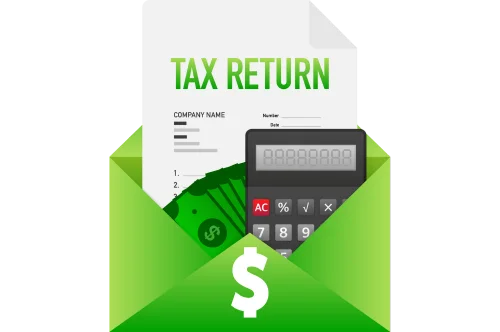Union Budget 2025-26: Key Highlights and Analysis
On February 1, 2025, Finance Minister Nirmala Sitharaman presented the Union Budget 2025-26, outlining the government’s financial roadmap for economic growth, employment generation, infrastructure expansion, and tax reforms. This budget holds significant implications for various sectors, and in this article, we will analyze its key highlights and potential impact.
1. Union Budget 2025-26: Major Tax Reforms
A major highlight of the Union Budget 2025-26 is the relief for salaried and middle-class taxpayers. The government has increased the income tax exemption limit to ₹12.8 lakh per annum, up from ₹7 lakh, under the new tax regime.
Additionally, tax slabs have been revised, reducing the burden on taxpayers earning between ₹12.8 lakh and ₹20 lakh annually. This move aims to boost disposable income and consumption, even though it will reduce government revenue by approximately ₹1 lakh crore annually.
2. Agriculture and Rural Development in Union Budget 2025-26
The Union Budget 2025-26 has allocated ₹2.66 lakh crore to the rural sector, with a strong focus on farmers. Key initiatives include:
- Pulses and Cotton Production Initiative: A six-year plan to boost domestic production and reduce imports.
- Natural Farming Scheme: Transitioning 1 crore farmers to chemical-free, organic farming within the next two years.
- Investment in Agricultural Research: Promoting high-yield, climate-resilient crops for better productivity.
3. Employment and Skill Development
The Union Budget 2025-26 aims to create employment opportunities through a ₹2 lakh crore skilling program, training 4.1 crore youth over the next five years.
Other employment-related initiatives include:
- Internship programs for 1 crore young professionals with leading companies.
- Wage support scheme to incentivize employers to hire first-time workers.
- Special skill programs for women to improve their workforce participation.
4. MSME Support – Boosting Small Businesses
To strengthen Micro, Small, and Medium Enterprises (MSMEs), the Union Budget 2025-26 introduces:
- Expansion of the Credit Guarantee Scheme, making loans more accessible.
- Funding for machinery purchases to improve production efficiency.
- Technology Support Initiative, helping MSMEs adopt digital tools and automation.
- 24 new SIDBI branches to enhance MSME financing across India.
5. Infrastructure & Urban Development – ₹11 Lakh Crore Investment
A major allocation of ₹11 lakh crore in the Union Budget 2025-26 is dedicated to infrastructure development, particularly in 14 major cities. Key investments include:
- Public Transport Expansion: Improving metro and bus rapid transit systems.
- Sewage and Waste Management: Upgrading sanitation in 100 cities.
- Affordable Housing for Industrial Workers: Developing PPP model rental housing projects.
6. Renewable Energy and Sustainability Initiatives
The Union Budget 2025-26 reinforces sustainability efforts through:
- Solar and Wind Power Projects to reduce coal dependency.
- Energy Efficiency Programs for industries and households.
- Financial incentives for EV adoption to accelerate green mobility.
7. Research & Innovation – ₹1 Lakh Crore Startup Fund
To promote entrepreneurship and innovation, the Union Budget 2025-26 introduces a ₹1 lakh crore R&D fund with:
- Removal of Angel Tax to boost startup investments.
- Simplified tax compliance for startups to encourage new businesses.
- Special grants for universities and research institutions working on technology and AI.
8. Fiscal Deficit and Economic Outlook
The government has set a fiscal deficit target of 4.4% of GDP in the Union Budget 2025-26, reducing the borrowing requirement to ₹14.82 lakh crore.
India’s GDP growth is projected between 6.3% and 6.8%, driven by higher domestic consumption and increased capital expenditure.
9. Corporate Sector and Stock Market Reaction
The Union Budget 2025-26 has influenced market trends, with key impacts including:
- FMCG and Automobile Stocks Rising: Companies like HUL, Nestle, Maruti Suzuki, and Hero MotoCorp saw stock price increases.
- Infrastructure Stocks Reacted Negatively: Due to a moderate rise in capital expenditure.
- Insurance Sector Stocks Declined: Owing to tax changes making insurance products less attractive.
10. Social Welfare & Inclusive Growth in Union Budget 2025-26
The Union Budget 2025-26 also emphasizes social welfare by allocating:
- ₹2 lakh crore for women-centric schemes, including maternal health and education.
- Expansion of Ayushman Bharat to cover more low-income families.
- ₹1 lakh crore for Scheduled Castes, Tribes, and Backward Classes Welfare Programs.
Final Thoughts on Union Budget 2025-26
The Union Budget 2025-26 is a balanced and growth-focused financial plan, addressing tax relief, employment generation, agriculture, infrastructure, and innovation. While it promises economic progress, effective implementation of these schemes will be crucial to achieving its intended impact.
What are your thoughts on the Union Budget 2025-26? Let us know in the comments below!
Our Tax Services
Our Tax Services

ITR Filing
ITR Filing services provide full assistance with Income Tax Return submissions, ensuring accurate and timely compliance with all tax regulations and statutory requirements for both individuals and businesses.

Tax Audit
A tax audit reviews financial records to ensure compliance with tax laws, verifying income, deductions, and expenses. It minimizes errors and helps businesses avoid penalties, ensuring accurate tax reporting.

E-Commerce Tax Services
Navigating taxes as an e-commerce seller can be challenging due to the unique complexities of online businesses. Here’s a quick overview of the essential tax services that can help simplify compliance and optimize tax savings





